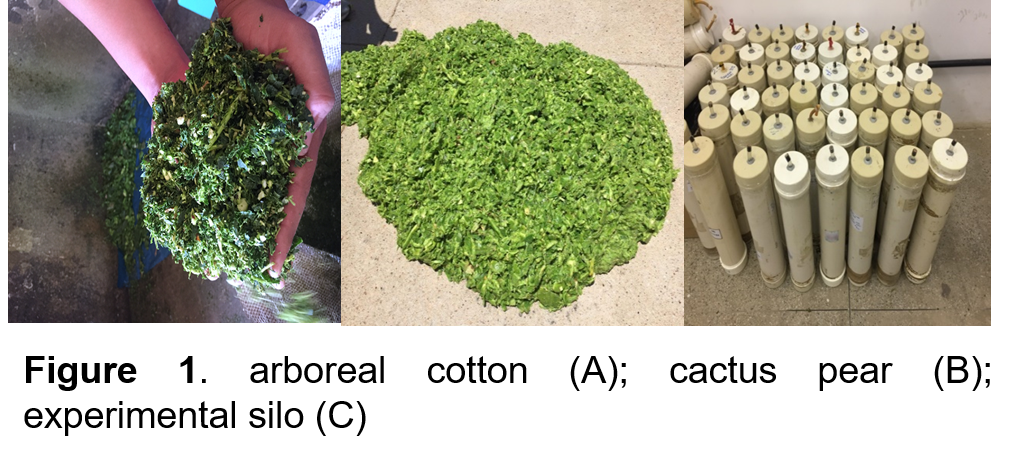The inclusion of cactus pear changes the fermentation process, chemical composition and aerobic stability of arboreal cotton silages
DOI:
https://doi.org/10.56890/jpacd.v24i.435Keywords:
Forage preservation Gossypium hirsutum; Opuntia stricta Haw; fermentation lossesAbstract
The objective was to evaluate the fermentation process, nutritional quality, and aerobic stability of mixed silages of arboreal cotton and cactus pear. This was a completely randomized design, with five levels of inclusion of cactus pear (0, 15, 30, 45, and 60%) in the arboreal cotton silage and four replications per treatment, totaling 20 experimental units. Data were submitted to analysis of variance and regression at a 5% probability level for type I error. The inclusion of cactus pear resulted in increased losses from gases (P<0.001), effluents (P<0.001), buffering capacity (P<0.001), aerobic stability (P = 0.010), and pH upward trend (P<0.001). There was a decreasing linear effect on dry matter recovery (P<0.001), pH (P<0.001), ammonia nitrogen (P <0.001), the maximum difference in the temperature of the silage in relation to the environment (P = 0.005) and maximum pH (P<0.001) of silages. The inclusion of cactus pear affected the maximum temperature (P<0.001) of silages in a quadratic way. There was a decreasing linear effect of dry matter (P<0.001), ether extract (P<0.001), Organic matter (P<0,001), crude protein (P = 0,002) and neutral detergent fiber corrected for ash and protein (P = 0.030). The use of cactus pear promoted an increasing linear effect for the levels of mineral matter (MM) (P<0.001), corresponding to an increase of 0,271%, for each 1% inclusion of cactus pear. The increase in the proportions of cactus pear in the silages promoted an increasing linear effect for mineral matter (P<0,001). The inclusion of cactus pear by up to 60% in arboreal cotton silages alters the fermentation profile with increased fermentation losses and nutritional reduction. However, it still presents characteristics of good quality silages.
Publication Facts
Reviewer profiles N/A
Author statements
Indexed in
- Academic society
- Journal of the Professional Association for Cactus Development
- Publisher
- Professional Association for Cactus Development




